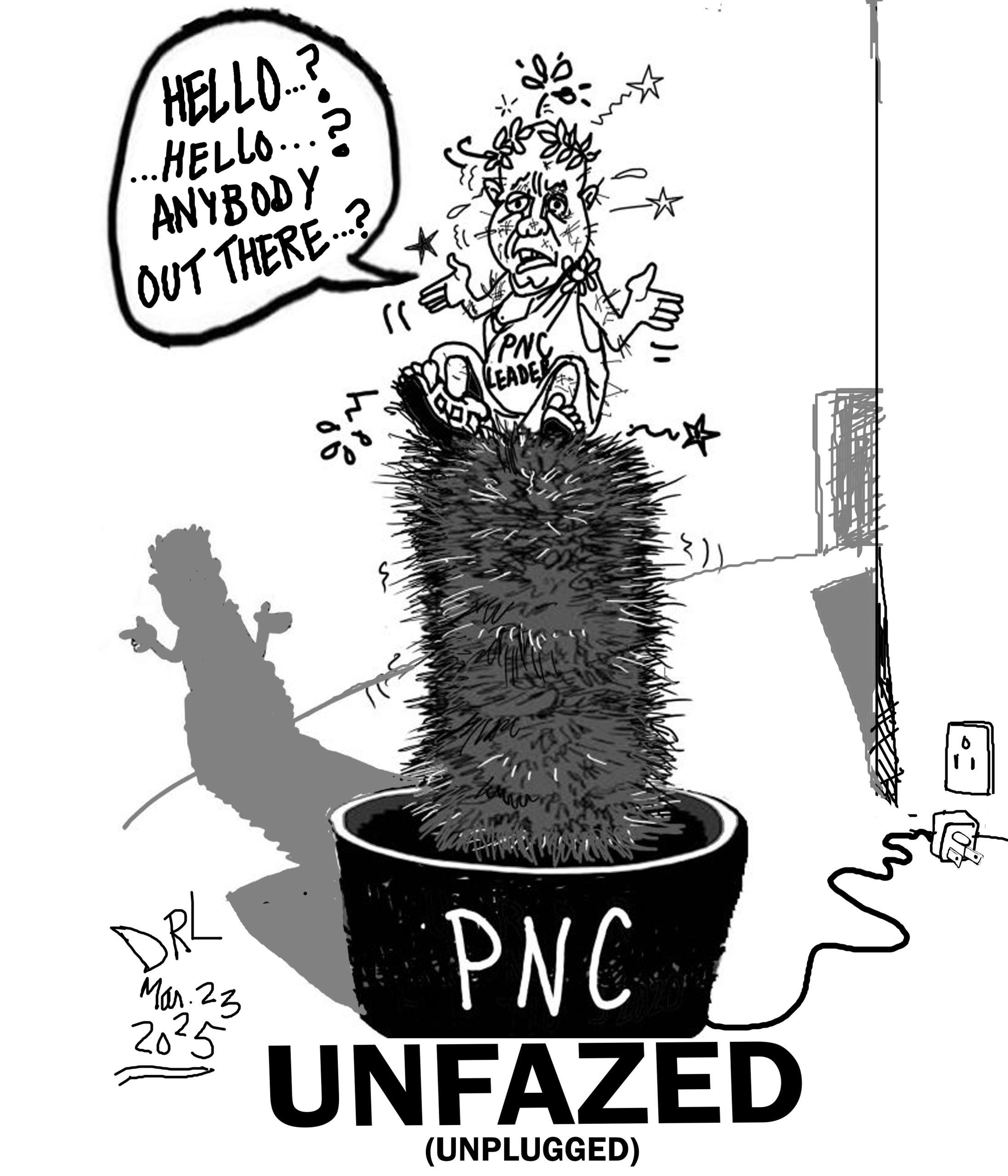Latest update March 28th, 2025 6:05 AM
Latest News
- “It will be a very bad day for Venezuelan if they attack Guyana or ExxonMobil”—Rubio declares
- Guyana gets info on U.S. tax evasion allegations against Mohameds, Mae Thomas
- US$35 injected into banking system to address foreign currency shortage—VP Jagdeo
- Citizens to stage protest today against lack of access to information in Guyana
- Guyana vows to stand with U.S.
Oil revenues could avert the greatest threat facing Guyana!
Feb 13, 2020 Letters
DEAR EDITOR,
Even in developed countries, critical infrastructure no longer enjoys protection by the military or the oceans. In the twenty-first century, threats to critical infrastructure occur in various forms- industrial espionage, terrorism, information warfare, insiders, and natural events.
On January 28, a powerful earthquake in the Caribbean led the Pacific Tsunami Warning Center to issue a tsunami threat for Belize, Cuba, Honduras, Mexico, the Cayman Islands, and Jamaica, with waves of up to 3 feet.
Would a tsunami with waves of three feet breach the seawall in Guyana?
The recent tsunami warning is a ‘wakeup call’ to Guyana that raises timely questions: What critical infrastructure assurances (CIA) exist in Guyana? What is the level of critical infrastructure protection (CIP) in place in Guyana in the event of a natural disaster?
Scientists agree that rising sea levels pose a significant threat to infrastructure and cities, especially in low lying areas around the world, including Guyana which is located some 6 feet below sea level at high tide.
A seawall defends the Capital city, Georgetown, and much of the coastline. The seawall was built in 1892 and stretched 285 miles long, but is considered fragile infrastructure. Fragility exacerbates the propensity for failure and is evident in the existing seawall along the coast. Most of Guyana’s critical infrastructure in Georgetown, and in the path of a Tsunami or rising sea level, could reach the seawall along the coast.
Such a natural disaster in Guyana would result in flooding from Georgetown to Soesdyke on the East Bank Demerara and Mahaica on the East Coast, as well as parts of West Bank Demerara, covering hundreds of square acres.
The disaster would disrupt transportation, communications, energy (electric), defense, postal and shipping, public health and healthcare, water and waste, and all government agencies. All of Guyana’s critical infrastructure would be severely damaged if not destroyed, including the Capital, Georgetown.
Move the Capital using oil revenues
Climate-change scientists warned that rising sea levels are already affecting coastal communities and small islands. Many cities could be ‘eliminated’ by 2050 and Georgetown could ‘disappear’ long before 2050.
Disaster preparedness and critical infrastructure protection in Guyana require bold, visionary leadership. The ability to envision that it is not a matter of “if” but “when” the seawall along Guyana’s northern coast will no longer withstand the forces of nature leading to a massive loss of life and the destruction of critical infrastructure along depths of the coastline is crucial for the nation’s survival.
Relocating the Capital to higher ground inland is a sure way of averting impending doom. Brazil and Belize recognized these vulnerabilities and have moved their Capital inland decades ago.
Prepare to act now
Infrastructure provides the underpinning of the economy. Economic recovery plans require significant upgrades and protection to mitigate disaster. National security and the way of life depend on the reliable functioning of a vast array of assets, according to the U.S. Department of Homeland Security; they include physical and virtual assets such as water, food, transportation, banking and finance, and energy.
Infrastructure is an asset or system whose disruption or destruction could negatively affect the performance of the economic and social functions of the state. For businesses to operate effectively and efficiently, it is critical to have assurances and preparedness plans in the event of a disruption.
Critical infrastructure protection
Guyana must develop a robust system to defend against threats and vulnerabilities. The U.S provides a solid example. The Department of Homeland Security (DHS) National Infrastructure Protection Plan (NIPP) established the framework for critical infrastructure protection by identifying and mitigating vulnerabilities to ensure resilience.
Resilience is the ability to resist absorb and recover or successfully adapt to adversity or disruption as well as prepare for and respond to a crisis, and reconstitute a system. Protecting and ensuring resilience is a shared responsibility between the private and public sectors. Cyber security in critical infrastructure aroused the interest and concern of energy utilities, government agencies, and consumer’s research institutions.
Preparing for and defending against external threats is critical for business continuity.
It would be prudent to mitigate disaster by using oil revenues today to build a new Capital City, rather than to use sovereign wealth funds in the future to rebuild and reconstitute critical infrastructure and a Capital lost to the sea.
Wayne Forde
Share this:
- Click to print (Opens in new window)
- Click to email a link to a friend (Opens in new window)
- Click to share on Facebook (Opens in new window)
- Click to share on WhatsApp (Opens in new window)
- Click to share on Twitter (Opens in new window)
- Click to share on Pinterest (Opens in new window)
- Click to share on Pocket (Opens in new window)
- Click to share on Tumblr (Opens in new window)
- Click to share on Reddit (Opens in new window)
- Click to share on LinkedIn (Opens in new window)
Related
Similar Articles

The Glenn Lall Show|| March, 17th, 2025
Follow on Tik Tok @Glennlall
THE BLUNT OF THE DAY

Sports
Mar 28, 2025
-Milerock face Bamia, Hi Stars battle Botafago, Ward Panthers match skills with Silver Shattas Kaieteur News- With a total $1.4M in cash at stake, thirteen clubs are listed to start their campaign as...Features/Columnists
The PPP has started the intimidation
Peeping Tom… Kaieteur News- In politics, as in life, what goes around comes around. The People’s Progressive Party/Civic... more
The Caribbean: Destined to Grin and Bear the Consequences of Its Self-Created Vulnerabilities?
By Sir Ronald Sanders For decades, many Caribbean nations have grappled with dependence on a small number of powerful countries... more
Publisher’s Note
Freedom of speech is our core value at Kaieteur News. If the letter/e-mail you sent was not published, and you believe that its contents were not libellous, let us know, please contact us by phone or email.
Feel free to send us your comments and/or criticisms.
Contact: 624-6456; 225-8452; 225-8458; 225-8463; 225-8465; 225-8473 or 225-8491.
Or by Email: [email protected] / [email protected]
Weekend Cartoon















